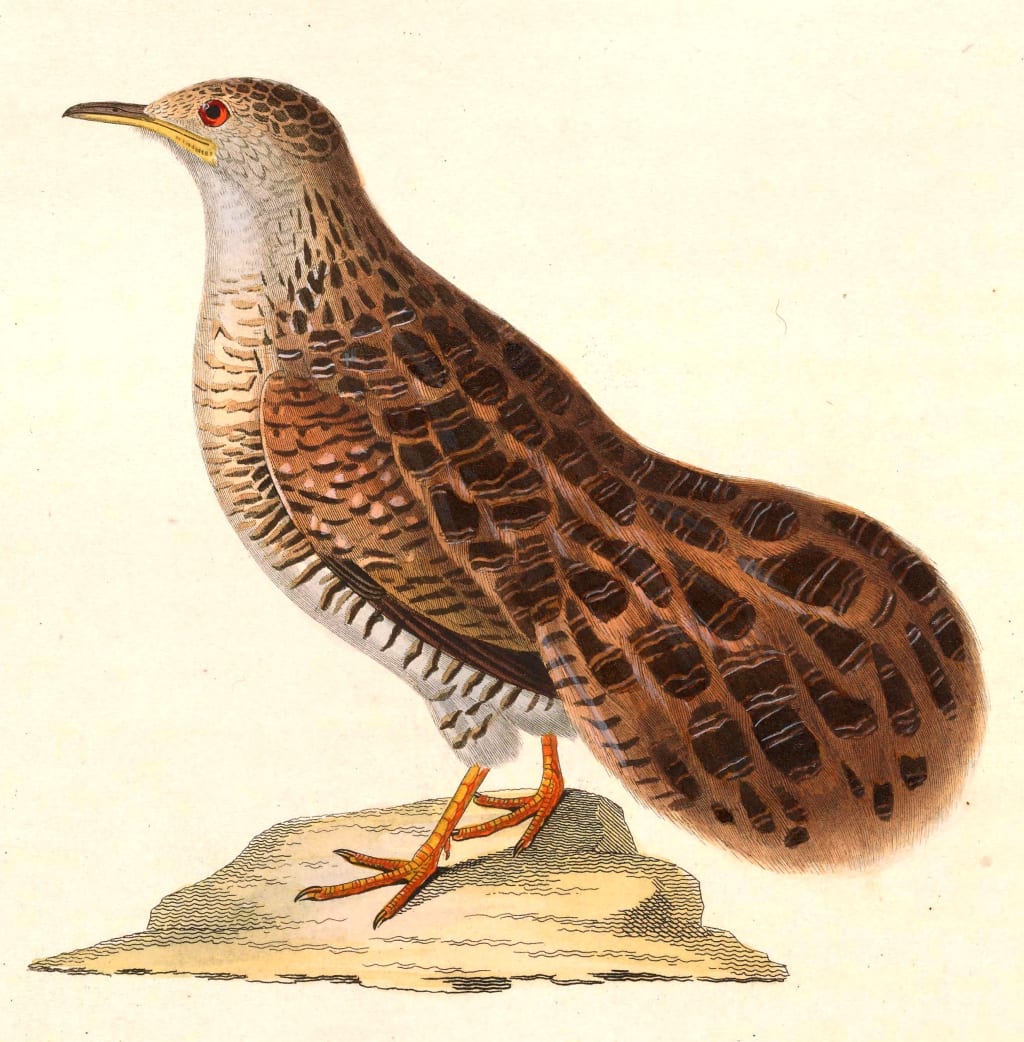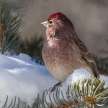
The Dwarf Tinamou is the sole member of the Taoniscus genus and is now very unfortunately very endangered and is being classified by BirdLife International as vulnerable because of the species ' favoured habititat, natural grasslands, particularly campo sujo, have been lost in recent decades at a disastrous rate to agricultural development. This tinamou bird is endemic to the Cerrado biome, where it is mostly restricted to southeast and central Brazil; while there are three old specimens from Paraguay and Argentina, the Dwarf Tinamou has not been recorded in either region recently. This is a small, plump yet short-legged tinamou, often of light buffy-brown plumage. The female with a whiter stomach is marked with greater confidence, and darker than the male. The Lesser Nothura is larger among similar species, with a longer body and heavier barred plumage. Better comprehension of the Dwarf Tinamou's voice, a high-pitched and distorted, cricket-like trill accompanied by several peet sounds, may lead to further recording of the species available due to its unchallenged rareness. A small, superficially partridge-like bird with short tail and wings is the miniature tinamou, also known as the least tinamou. Tinamous, like other ratites, can float but in general they are not fast fliers. All ratites derived from ancient flying birds, and tinamous are the closest living relative to these birds. The miniature tinamou is only a member of the genus Taoniscus, which is a monotypical species. It's approximately 16 cm tall. For a white throat, sharply patterned collar and upper parts, it is greyish-brown and has brown-barred subparts of buff and a blackish crown that stands out. Some individuals are much darker and greyer than others, but it is unclear if such plumage variations are morphs or gender differences that occur over time. Of colour, the iris and legs are yellowish and it resembles a little dumpy nothura, but with the ocellated crake it is more readily confused in more cases.. The voice consists of cricket-like, high-pitched trills followed by peet clicks. The dwarf tinamou is found in the arid scrub grasslands, about 1,000 metres above sea level, confined to the southeastern Brazilian Cerrado region in the Federal District, Goiás, Minas Gerais, Mato Grosso do Sul, São Paulo, and for that cause. Only specimens were known from Paraguay (Misiones) and Argentina but all recent data come from Brazil. However, it is especially imperceptible, and is easily missed. The Dwarf Tinamou diet primarily consists of grass seeds, termites, flies, and arthropods. Thanks to mechanised agriculture, intensive cattle ranching, afforestation, native grasses, excessive use of pesticides and annual deforestation, the dwarf tinamou is seriously endangered by continuing habitat loss. This is also killed by humans in many areas for food. The primary challenges are forestry and ranching. The dwarf tinamou is listed as Vulnerable on the IUCN Red List of Threatened Species. This has an occurrence size of 57,700 km2, and the last demographic census, conducted in 2000, saw between 5,800 and 6,960 people. The dwarf tinamou is permanently conserved in three protected areas: Serra da Canastra National Park, Itapetininga Experimental Station and IBGE Roncador Ecological Reserve. Several areas adjacent to the Río Bermejo, Argentina, were scanned with the aid of tape-playback but the species was not found. It was also intended to use tape-playback particularly for this species to study Serra do Cipó National Park, Chapada dos Veadeiros National Park, and Emas National Park. Then perform further research at the sites where the specimen was collected in then Paraguay, Argentina. It has also been proposed to establish best conservation strategies for current protected areas and track the degradation of the cerrado forests.
About the Creator
MB
I am a bird aficionado and really enjoy spotting them them on hikes. I greatly appreciate the variety of birds cross North America and the world. They are amazing and intelligent creatures, each so unique and with a wonderful life.
Enjoyed the story? Support the Creator.
Subscribe for free to receive all their stories in your feed. You could also pledge your support or give them a one-off tip, letting them know you appreciate their work.






Comments
There are no comments for this story
Be the first to respond and start the conversation.